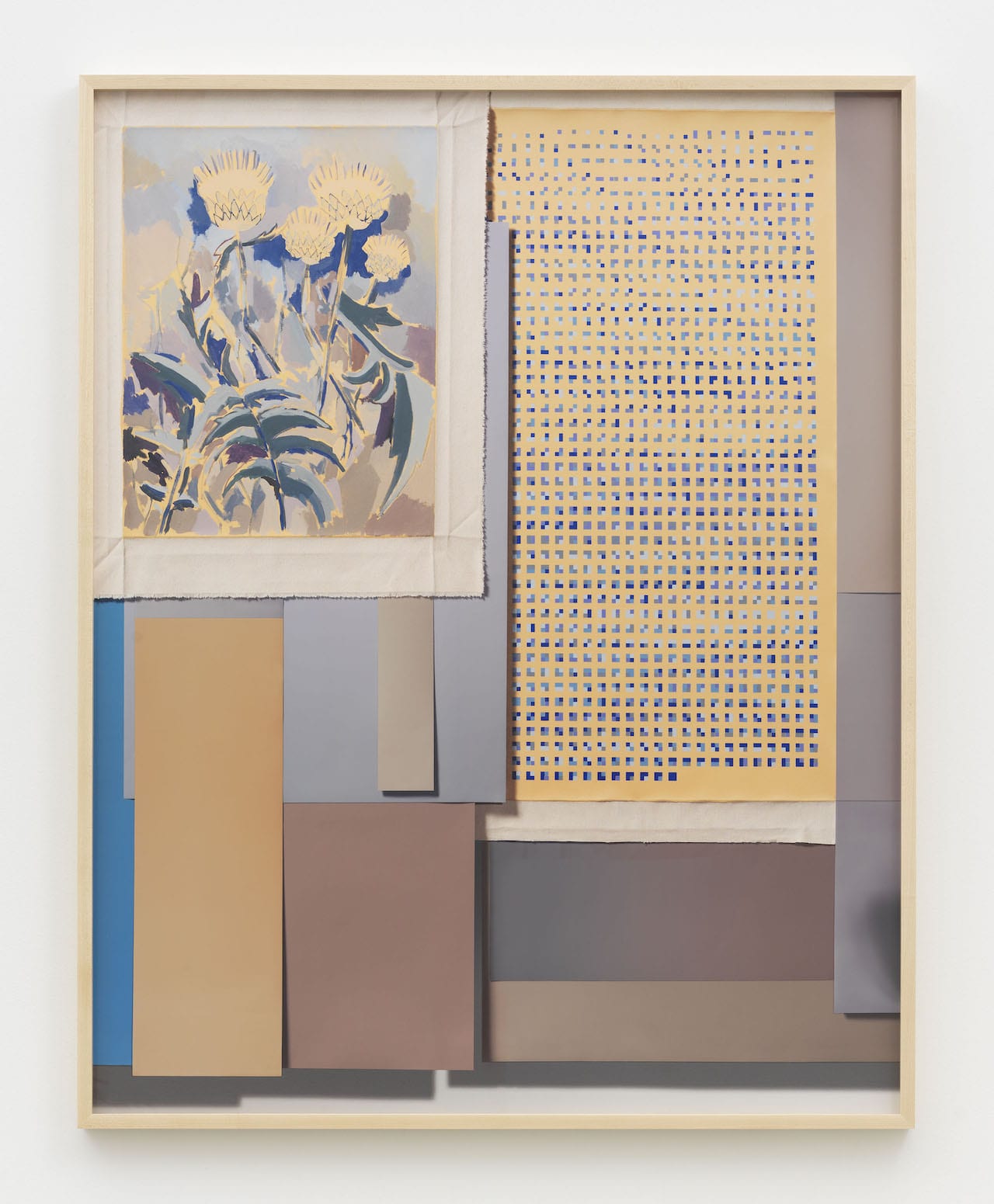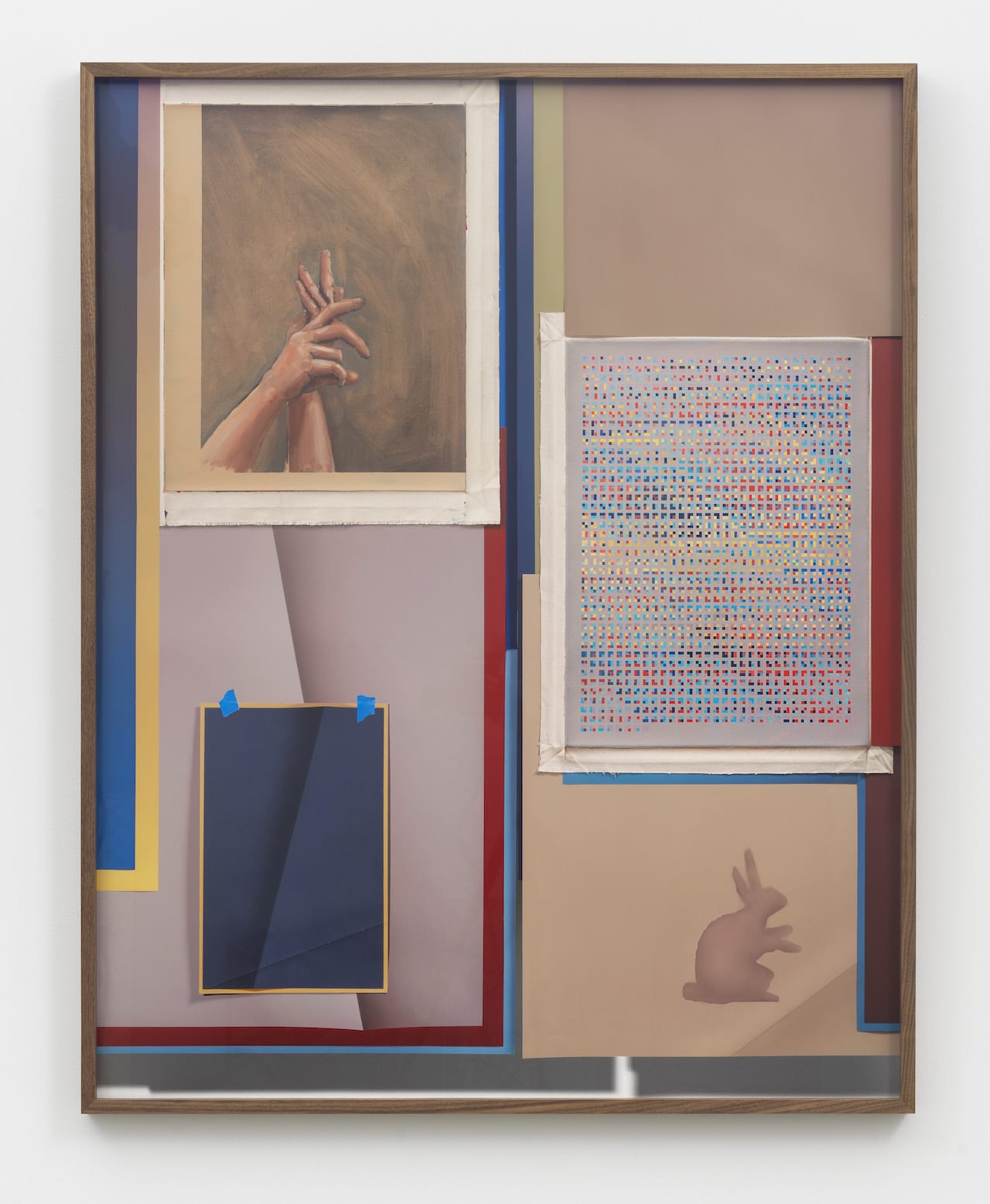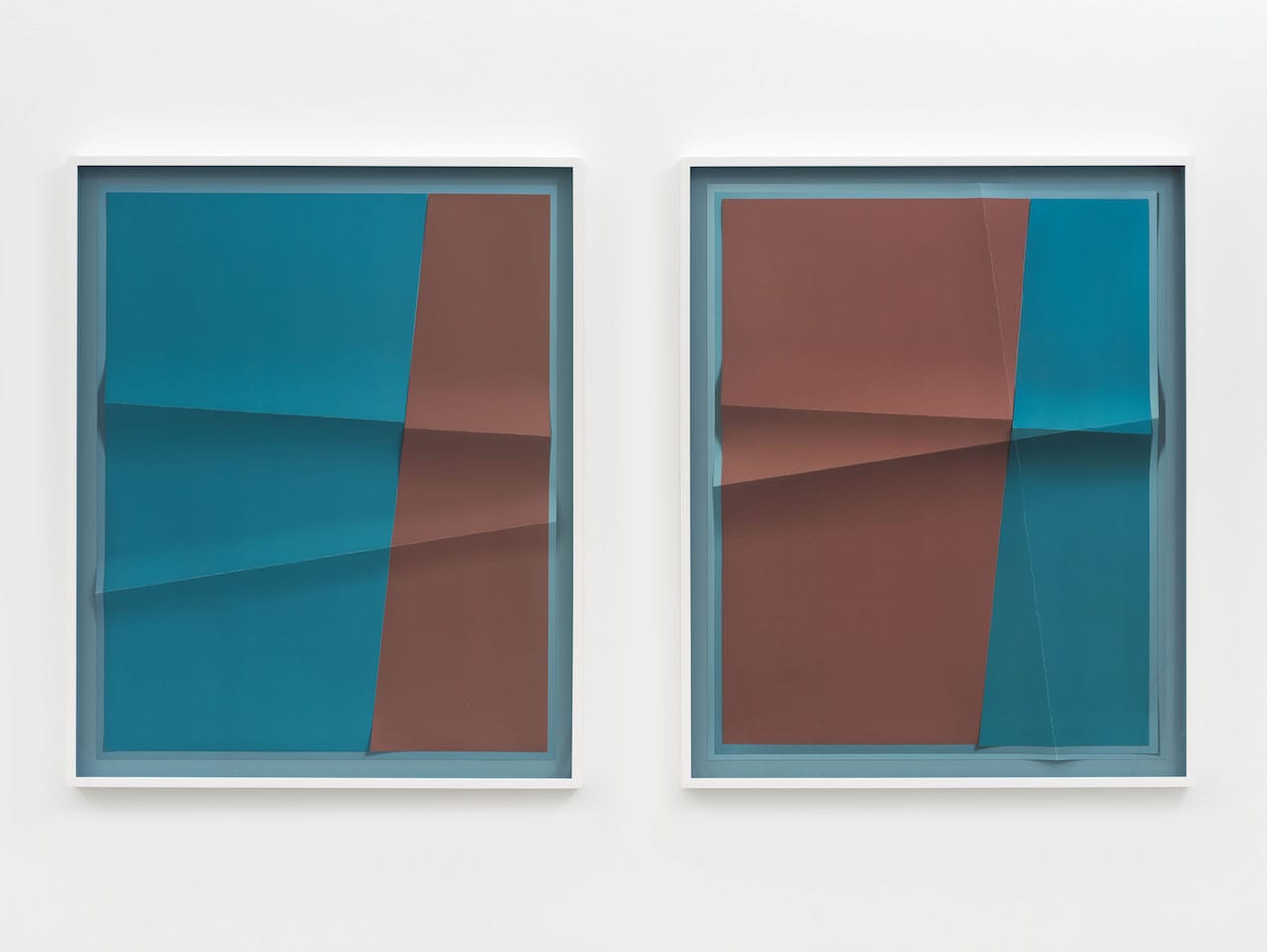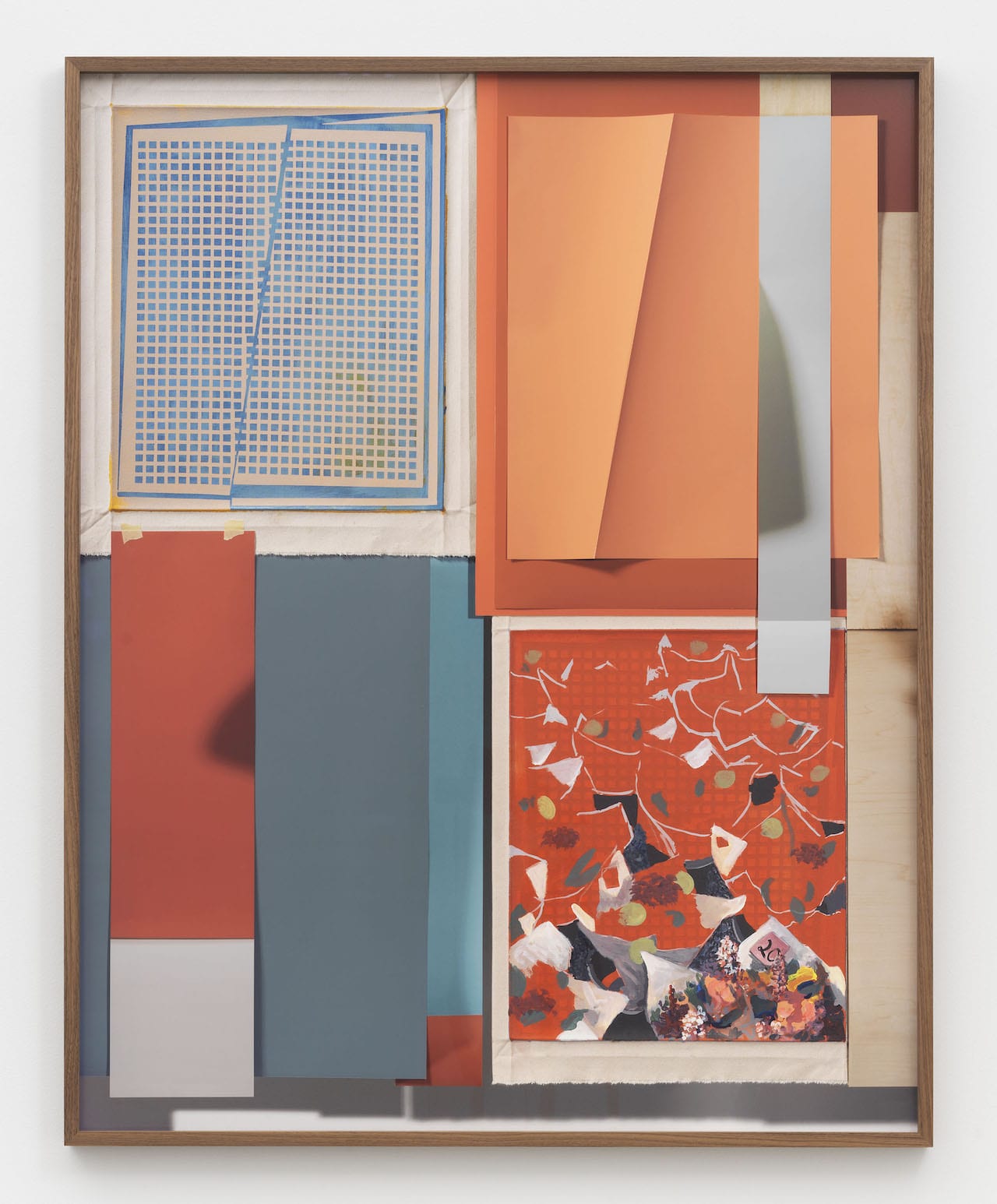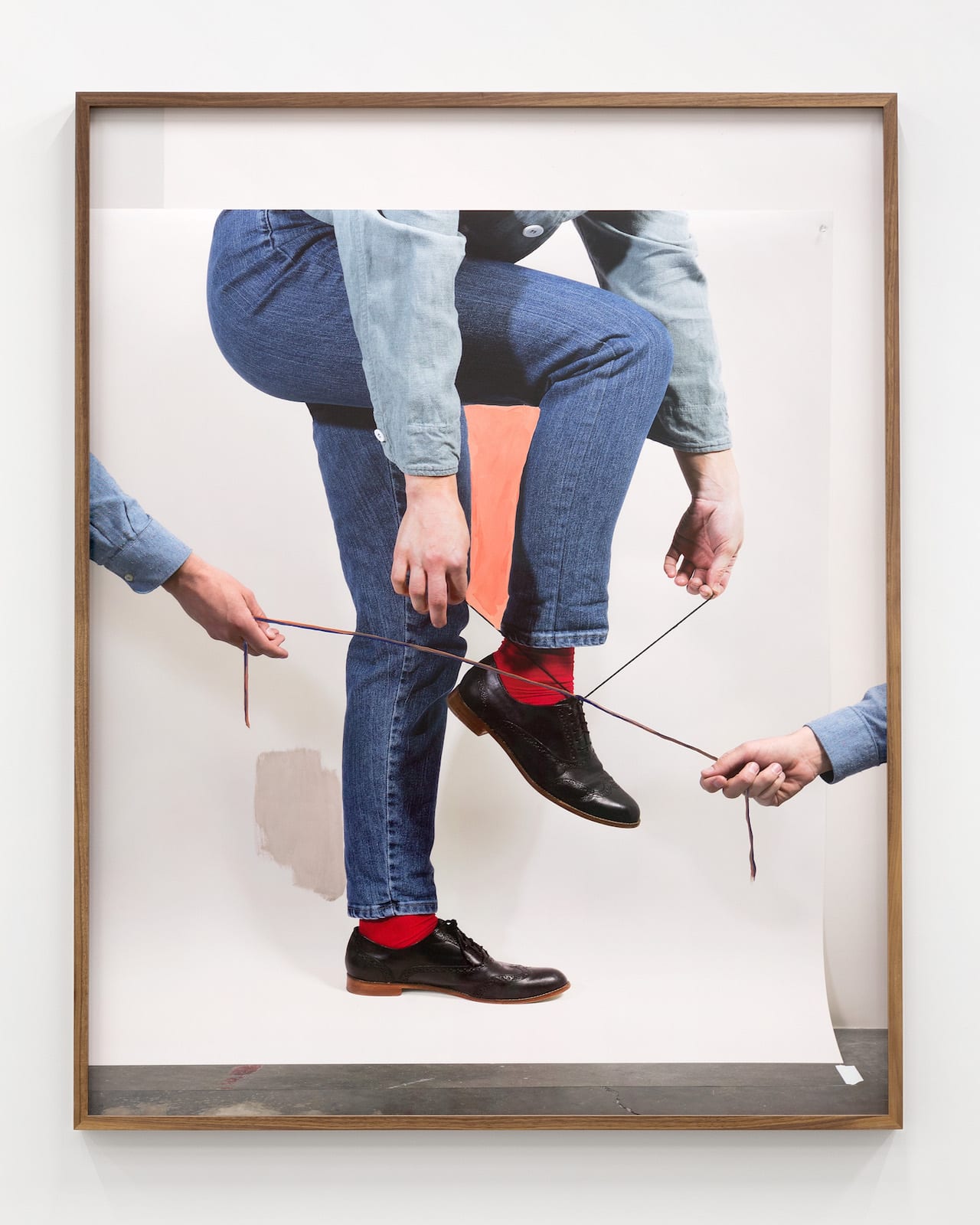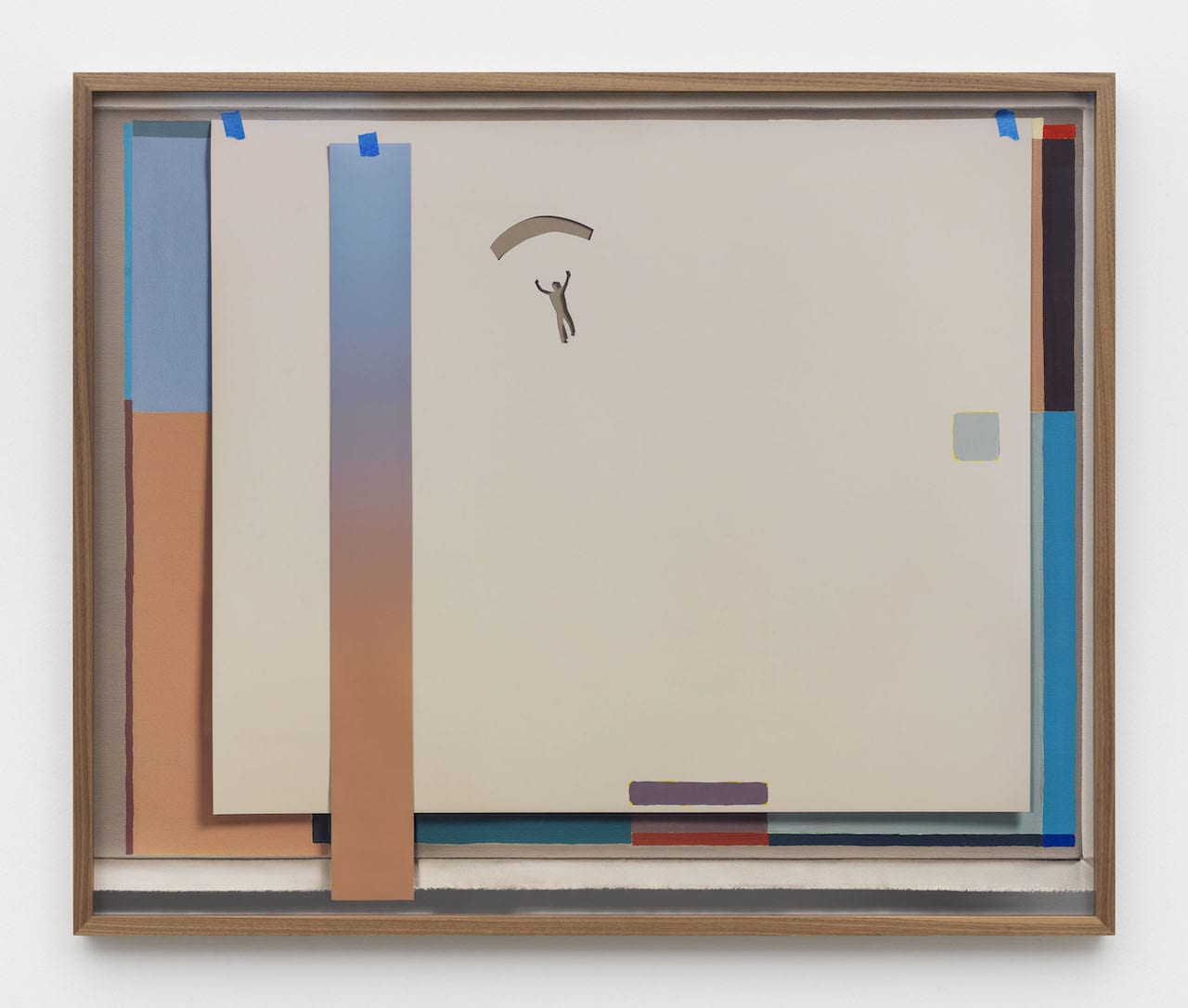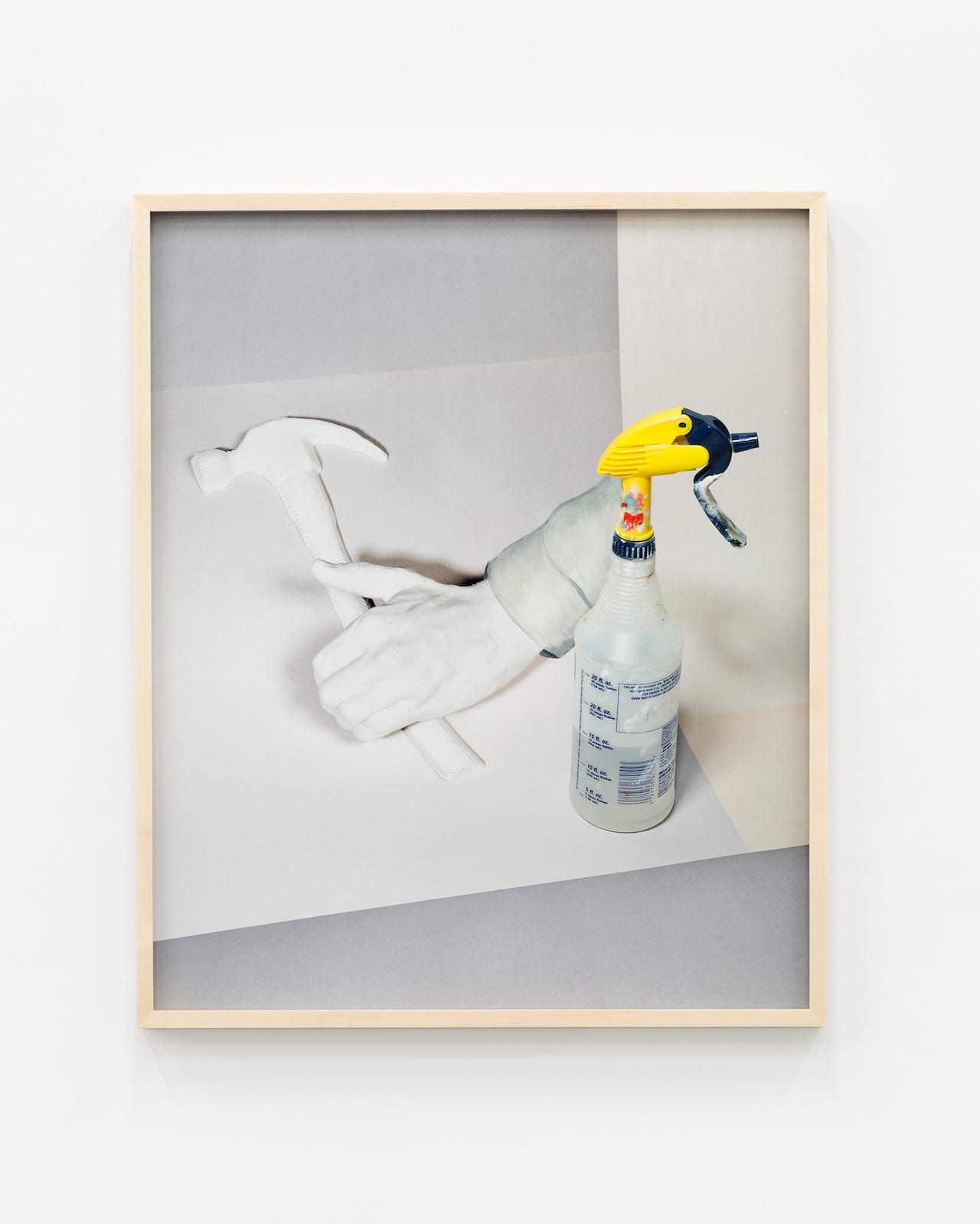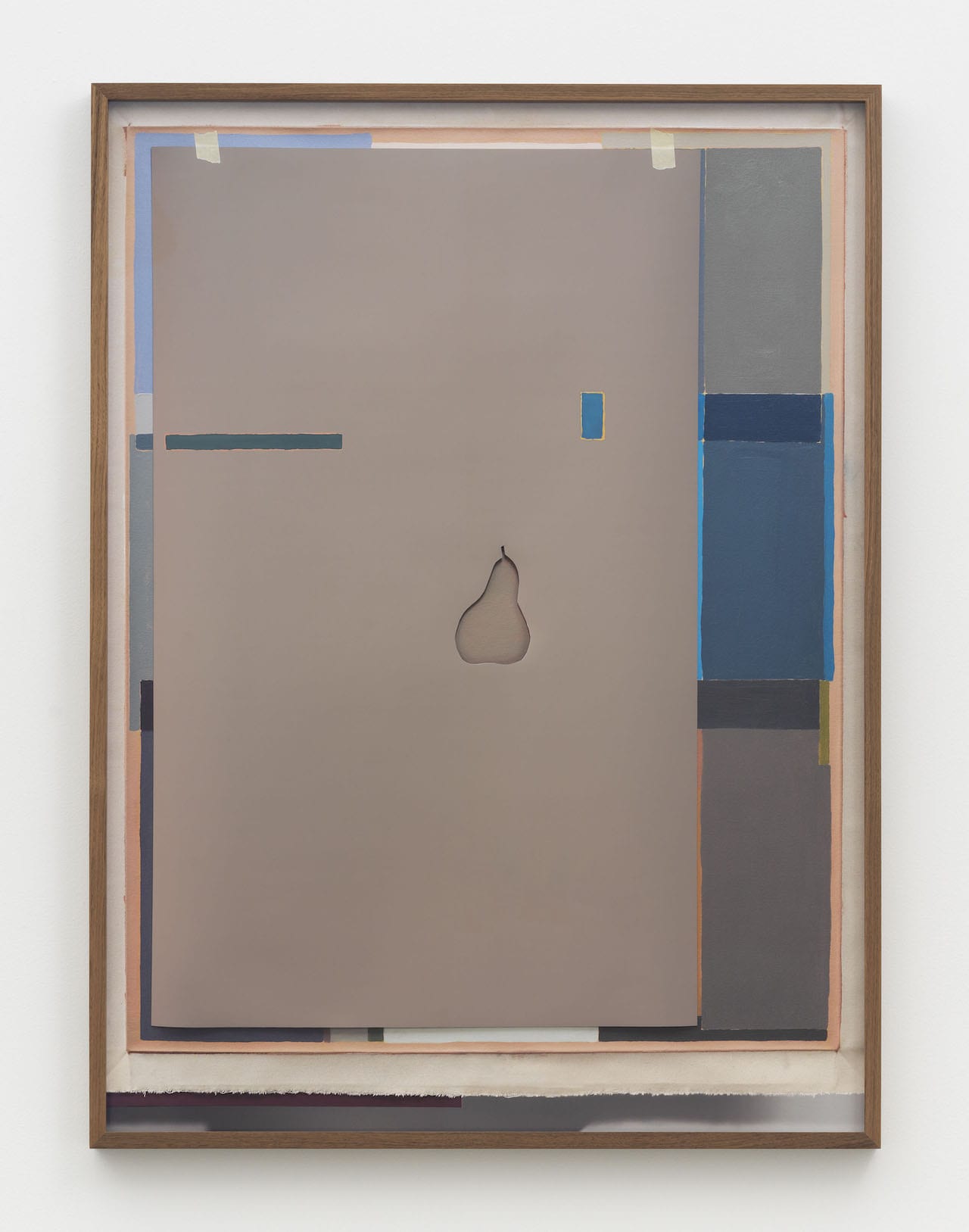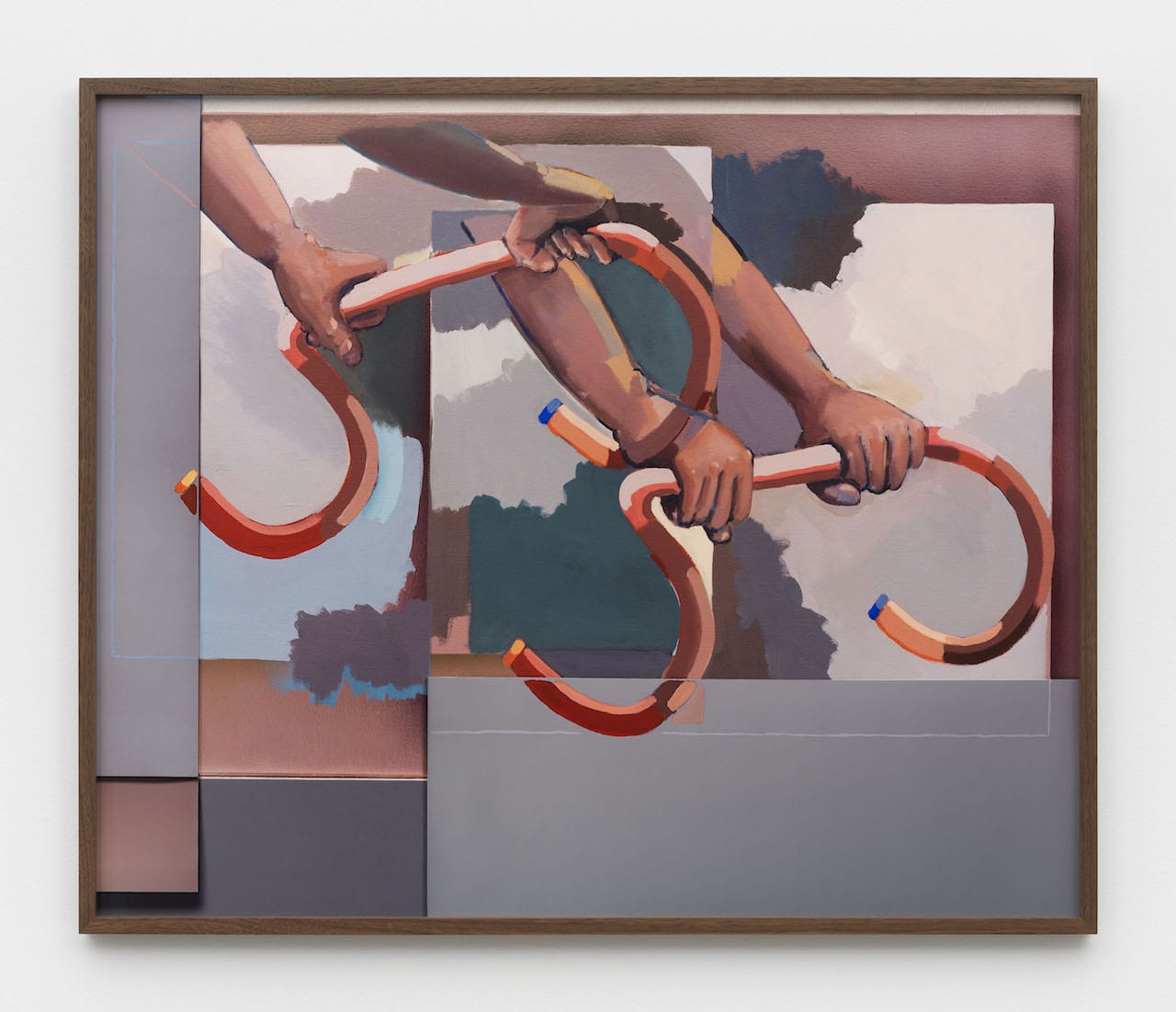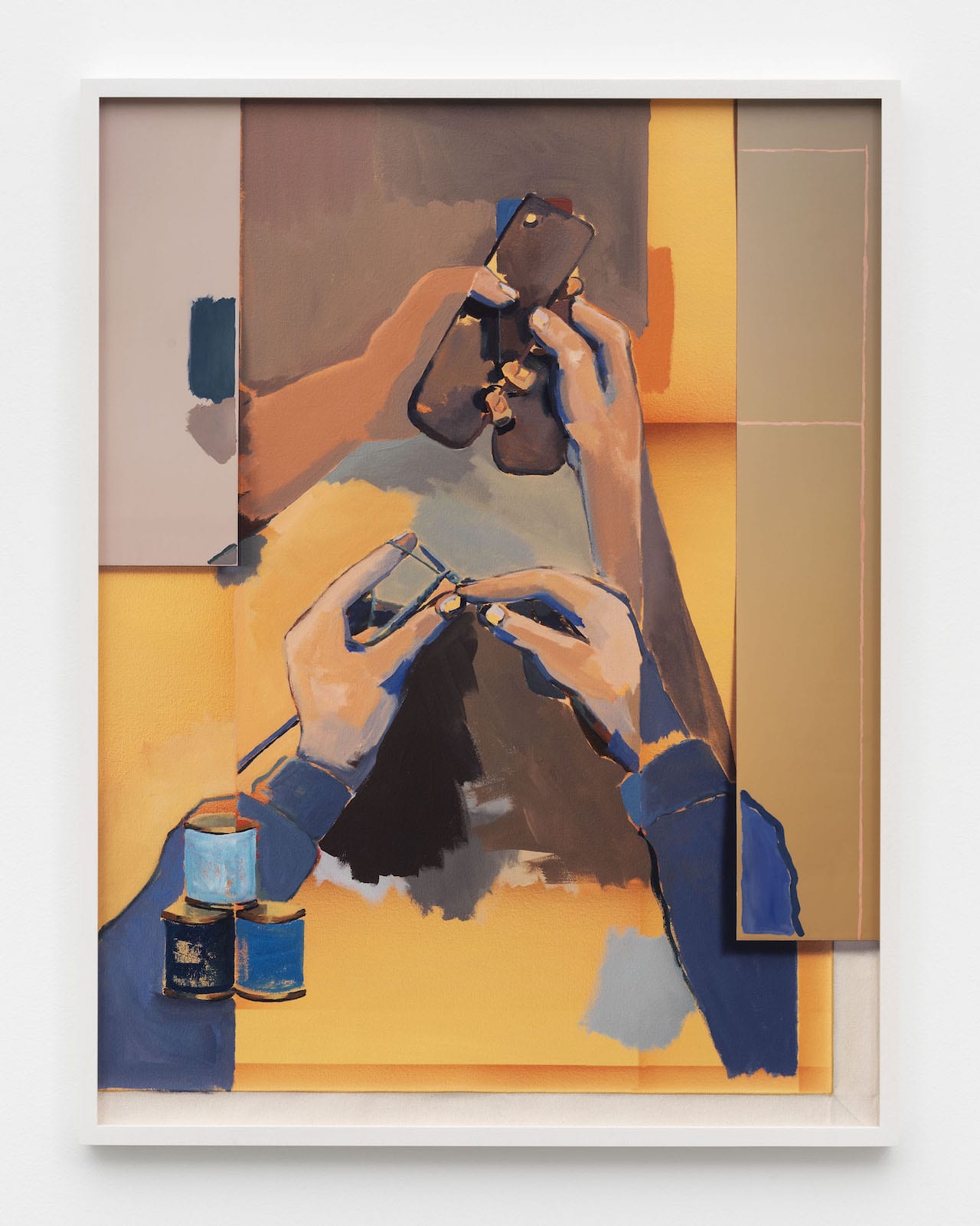“Your memory isn’t like a file in your hard-drive that stays the same every time you revisit it. It actively changes,” says John Houck, whose images – just like our memories – can be deceptive. His pieces are made cyclically by photographing and rephotographing objects, paintings, and sheets of folded paper, adding and removing elements with each iteration. “It’s a way to get at the way in which memory is an imaginative act,” he says.
The LA-based image-maker began working in this style while on the Whitney Independent Study Program in New York, where he became captivated by the study of psychoanalysis. Eventually, he decided to go and see an analyst himself, and started to produce images that reflected his psychoanalytic experiences. “It was a way to get closer to what it was all about,” he says.
Since then, Houck has worked on several bodies of work that reflect on his time in therapy. “I showed up to the first session with a notepad and a pen, thinking I’d make a class out of it – the analyst almost laughed at me. I realised I was using my intellect to separate myself from real emotions, and it changed into something that was much more personal that I could have never anticipated, it really expanded my work.”
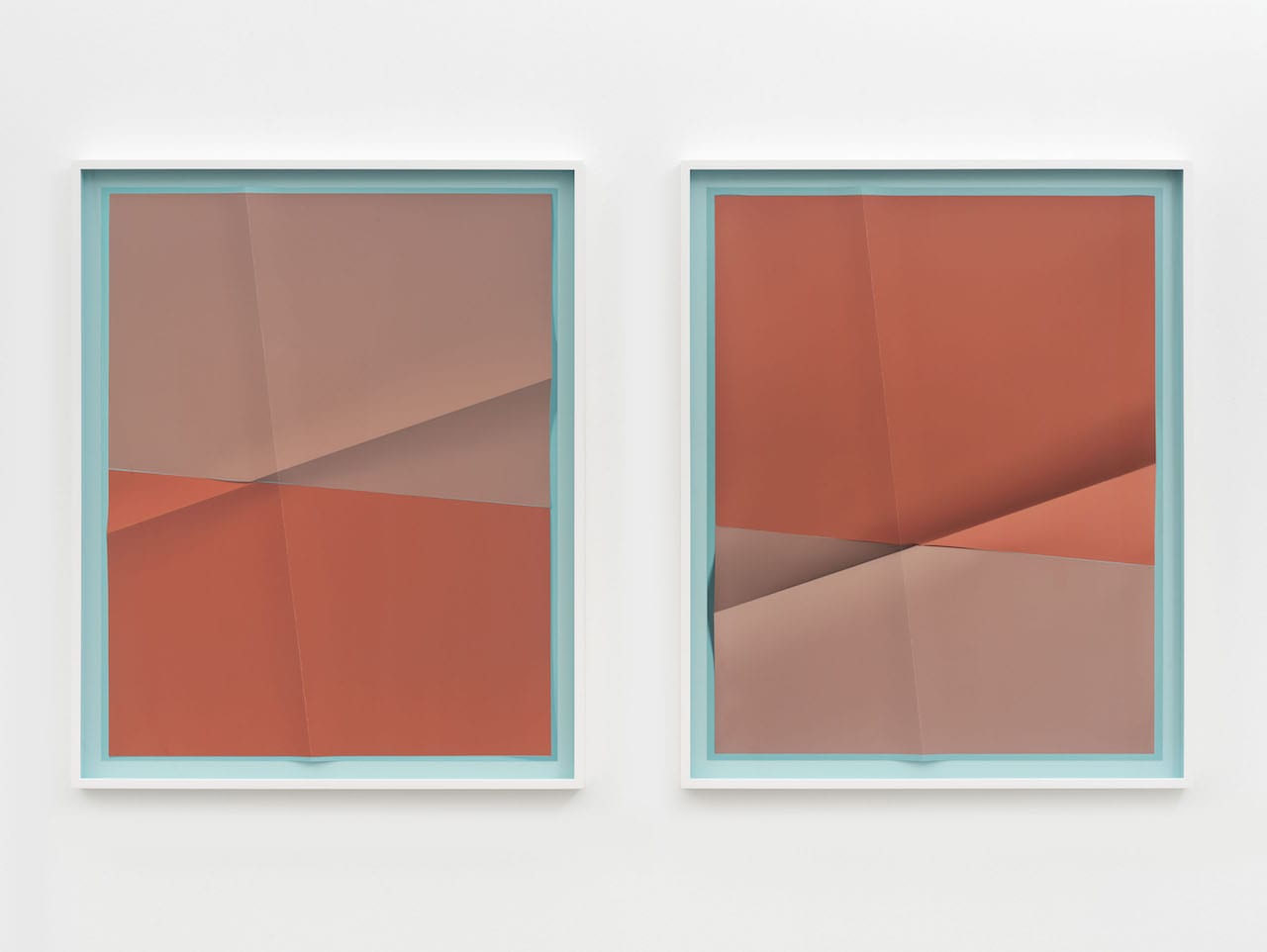
He describes his earlier work as more “systematic”. In Aggregates, for example, he repeated the process of creasing, photographing, and printing sheets of striped paper, to create a final piece with both real and fake shadows. His newer work uses a similar process, but after engaging in psychoanalysis he began to incorporate objects, such as ones that his parents had given to him from his childhood. These pieces accumulated into a body of work titled The History of Graph Paper.
Once he felt the objects had run its course, Houck started photographing paintings that he had created out of memories from his time in psychoanalysis, which make up his latest body of work, Holding Environment. “It became more about interrogating formative moments and memories I had,” he explains. “There is something about the messiness and looseness of painting that opened up my practice, which corresponds with the things I was going through psychically.”
Though flat, his work has a tactile quality because of all the shadows. People often comment on how they have the desire to touch the works to see what is real and what is flat, says Houck, “this haptic or implied tactile quality in the work communicates the importance of touch in verifying our visual sense”.
The title, Holding Environment, is a term borrowed from the psychoanalyst Donald Winnicott; it refers to the supportive environment that a therapist creates for their client, and can be likened to the nurturing behaviour that a mother engages in with her child. Houck was drawn to the concept because he and his wife recently had a baby girl, which made him think about what kind of holding environment she was born into.
https://www.johnhouck.com/ Holding Environment is on show at the Marianne Boesky Gallery in New York till 22 December 2018 https://www.marianneboeskygallery.com/
